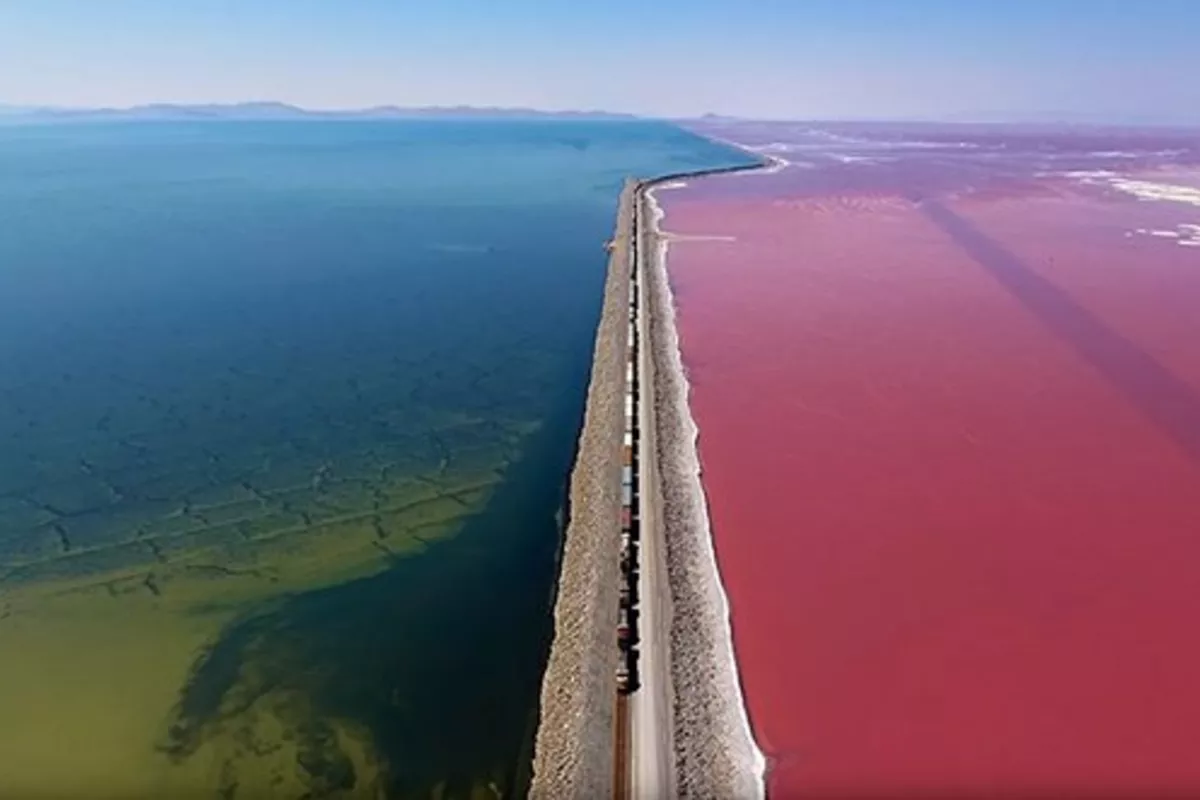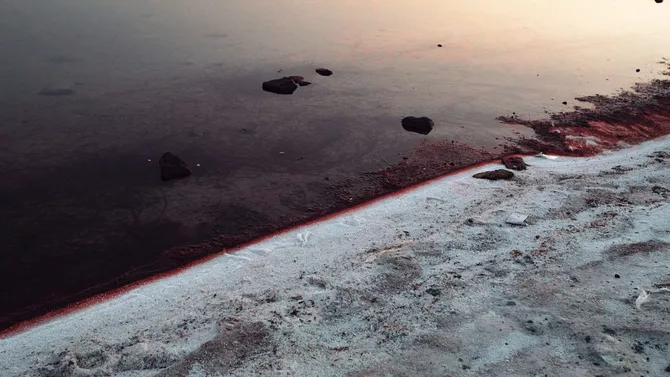
photo: Tehran Times
The Middle East has lost one of its most iconic natural wonders. Lake Urmia, once the largest saltwater lake in the region and a vital ecological treasure, has now almost completely vanished. According to the latest high-resolution satellite images released by the U.S. National Aeronautics and Space Administration (NASA), the lake has transformed into an enormous salt plain, with only tiny patches of water remaining in some areas. For centuries, Lake Urmia was known for its stunning turquoise waters and unique biodiversity, but today, it stands as a stark reminder of the devastating consequences of climate change, mismanagement, and neglect.
Experts cite several interconnected causes for this environmental disaster: prolonged drought linked to global climate change, the construction of dams that diverted water from the rivers feeding the lake, and the excessive, unsustainable use of water for agriculture and urban development. These factors combined over decades to create an irreversible process of desiccation. The consequences are already proving catastrophic, not only for the fragile ecosystem of northwestern Iran but also for human health and livelihoods. Environmentalists warn that this disaster places the region on the very edge of an ecological collapse. Over the past twenty years alone, Lake Urmia has lost an astonishing 95 percent of its water volume - a dramatic decline that was visible year after year in satellite images and field reports.

photo: Baku Research Institute
Hojjat Jabbari, Director General of the Environmental Protection Organization in Iran's West Azerbaijan Province, admitted in a July interview with Tasnim News Agency that restoring the lake is now impossible. According to Jabbari, the tragedy was driven by a drastic reduction in rainfall, increased evaporation due to rising temperatures, relentless expansion of gardens and farmland, and, critically, the government’s failure to implement decisions made by the Lake Urmia Restoration Committee.
“This was not a sudden event,” Jabbari said. “It was a slow-motion catastrophe, decades in the making. Every year we saw the lake retreating, and yet meaningful action was delayed.”
The lake, once celebrated as a natural jewel and a tourist attraction, has now been reduced to a massive salt quarry. Its salt reserves are estimated to be as high as 6.5 billion tons. Given the increasing industrial demand for salt, temporary permits are now being issued for its extraction. Jabbari insists that this will not significantly harm the lake further.
“The salt deposits are so vast,” he explained, “that even with an annual extraction of two million tons, it would take about three thousand years to deplete them entirely.”
However, the problem of Lake Urmia is far from new. Warnings about its potential disappearance have been voiced for decades, yet successive Iranian governments failed to act decisively. Proposals came and went, often trapped in political debates or bureaucratic deadlock. In 2015, there were serious discussions about transferring water to Urmia from other sources, including Lake Van in Türkiye or lakes in Georgia. At the time, Isa Kalantari, then the Secretary of the Lake Urmia Restoration Center - and later Iran’s Vice President and head of the Environmental Protection Organization - revealed that Lake Van and Lake Urmia were separated by just 170 kilometers, making the idea technically feasible. Negotiations began on both technical and political fronts, but ultimately, no agreement was reached.

photo: Al Arabiya
Iranian officials even pointed out that Türkiye was holding $9 billion in frozen Iranian oil revenues, and only $1 billion was needed to implement the water transfer project. Politically, a deal with Georgia might have been easier to achieve, but from an economic standpoint, it was deemed unviable. Another proposal, which generated significant controversy, involved constructing a canal from the Aras River to Lake Urmia. This raised serious concerns among Azerbaijani experts, who warned that such a diversion would create severe water shortages in Azerbaijan’s Saatli, Sabirabad, and Imishli districts. Fortunately for Azerbaijan, the plan collapsed due to financial constraints before it could be realized.
By 2021, the situation had reached a critical point. Yasir Rahbardin, head of the Regional Water Company in West Azerbaijan Province, issued a stark warning: unless immediate and drastic steps were taken, Lake Urmia would completely dry up. Data at the time showed that in just one year, the water level had dropped by half, a clear indicator of an accelerating disaster. Despite these warnings, progress was minimal. Iranian media began reporting on the unexplained disappearance of state funds allocated to save the lake. The Lake Restoration Center reportedly received 15 billion tomans, but there was no transparency about how the money was spent. No major projects were implemented, and for the past two decades, Lake Urmia’s survival depended almost entirely on sporadic rainfall.
Iranian experts are now emphasizing that the crisis cannot be blamed solely on climate change. Human actions - poor water management, unchecked agricultural expansion, and political negligence - have been the dominant factors. The region around Lake Urmia is predominantly inhabited by ethnic Azerbaijanis, and this demographic reality has added a political dimension to the crisis. Many local residents believe that the central government deliberately failed to act, intending to force people to abandon the area. This perception has fueled protests and civil unrest in Azerbaijani-populated regions, turning an environmental disaster into a deeply sensitive political issue.
The disappearance of Lake Urmia has far-reaching implications beyond the immediate region. Scientists predict that the complete drying of the lake will lead to massive sand and salt storms, affecting up to one-quarter of Iran’s territory. These storms will not only destroy agriculture and infrastructure but also pose serious health risks, including respiratory diseases, to millions of people. The depletion of groundwater has already forced the evacuation of numerous villages, as wells have run dry and farming has become impossible. Kalantari previously warned that if the crisis continues, nearly 50 million people - roughly 70 percent of Iran’s population - could eventually be forced to migrate, potentially triggering one of the largest environmental refugee crises in modern history.
The story of Lake Urmia is a cautionary tale of missed opportunities. The lake began showing signs of decline as early as 1995, providing the Iranian government with a thirty-year window to act. Instead, that time was squandered on political disputes, corruption, and half-measures. International organizations and environmental groups repeatedly offered expertise and assistance, but these efforts were often blocked by political considerations.
Today, the once-vibrant lake that was home to flamingos, pelicans, and unique species of brine shrimp is gone. What remains is a vast, barren expanse of salt - a haunting symbol of environmental collapse. The loss of Lake Urmia serves as a stark reminder of the urgent need for governments worldwide to take decisive action in the face of climate change and ecological degradation. Without a fundamental shift in environmental policy and management, other natural wonders may share the same tragic fate.
By Tural Heybatov
Share on social media